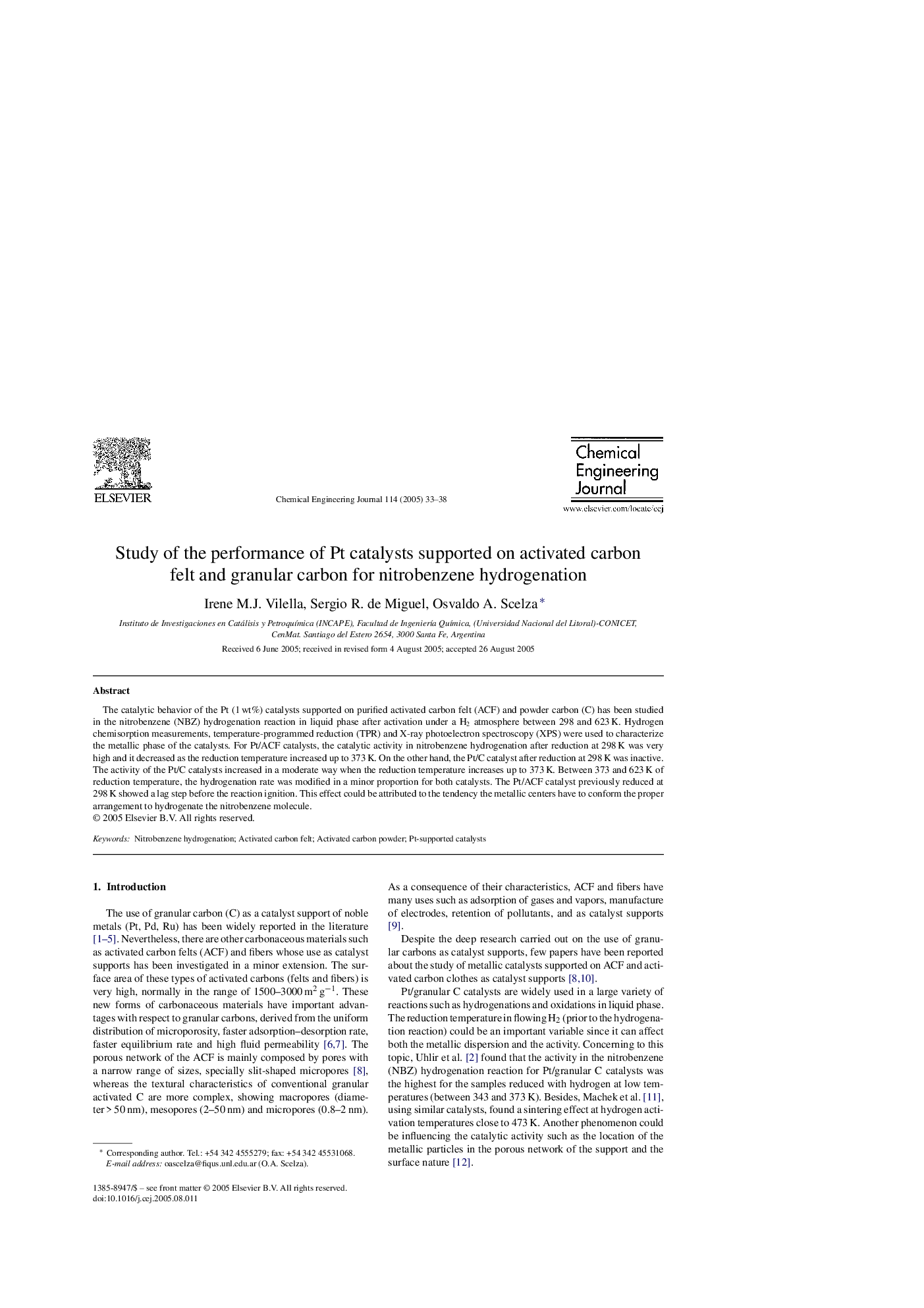| Article ID | Journal | Published Year | Pages | File Type |
|---|---|---|---|---|
| 9623703 | Chemical Engineering Journal | 2005 | 6 Pages |
Abstract
The catalytic behavior of the Pt (1Â wt%) catalysts supported on purified activated carbon felt (ACF) and powder carbon (C) has been studied in the nitrobenzene (NBZ) hydrogenation reaction in liquid phase after activation under a H2 atmosphere between 298 and 623Â K. Hydrogen chemisorption measurements, temperature-programmed reduction (TPR) and X-ray photoelectron spectroscopy (XPS) were used to characterize the metallic phase of the catalysts. For Pt/ACF catalysts, the catalytic activity in nitrobenzene hydrogenation after reduction at 298Â K was very high and it decreased as the reduction temperature increased up to 373Â K. On the other hand, the Pt/C catalyst after reduction at 298Â K was inactive. The activity of the Pt/C catalysts increased in a moderate way when the reduction temperature increases up to 373Â K. Between 373 and 623Â K of reduction temperature, the hydrogenation rate was modified in a minor proportion for both catalysts. The Pt/ACF catalyst previously reduced at 298Â K showed a lag step before the reaction ignition. This effect could be attributed to the tendency the metallic centers have to conform the proper arrangement to hydrogenate the nitrobenzene molecule.
Keywords
Related Topics
Physical Sciences and Engineering
Chemical Engineering
Chemical Engineering (General)
Authors
Irene M.J. Vilella, Sergio R. de Miguel, Osvaldo A. Scelza,
